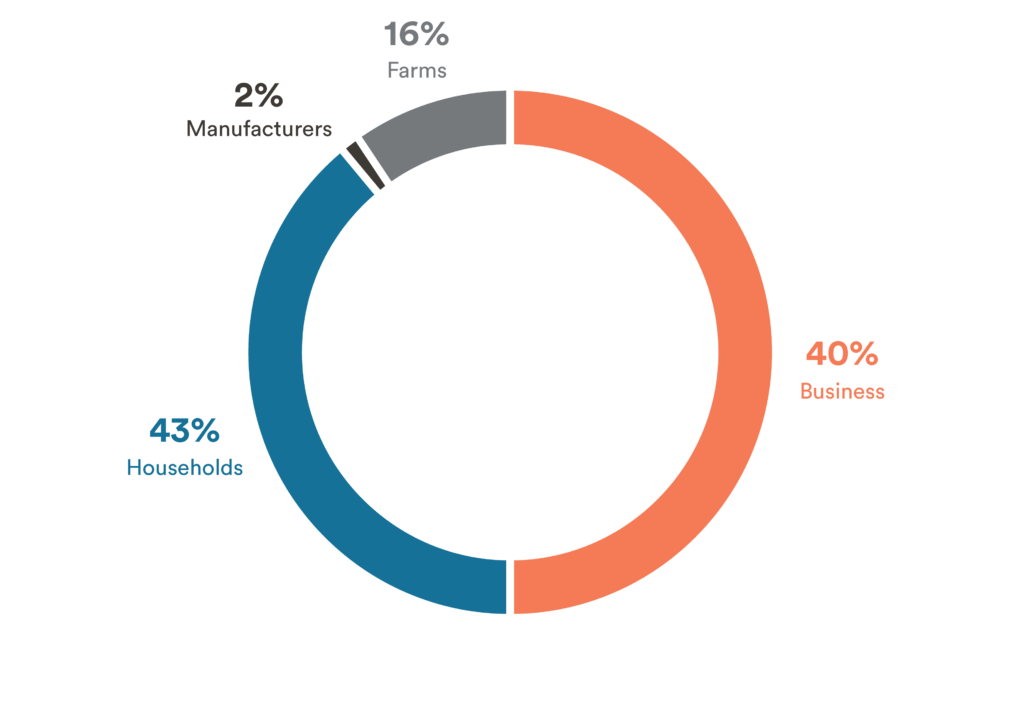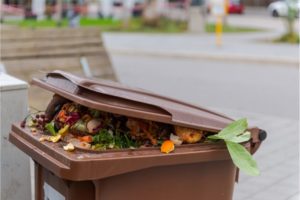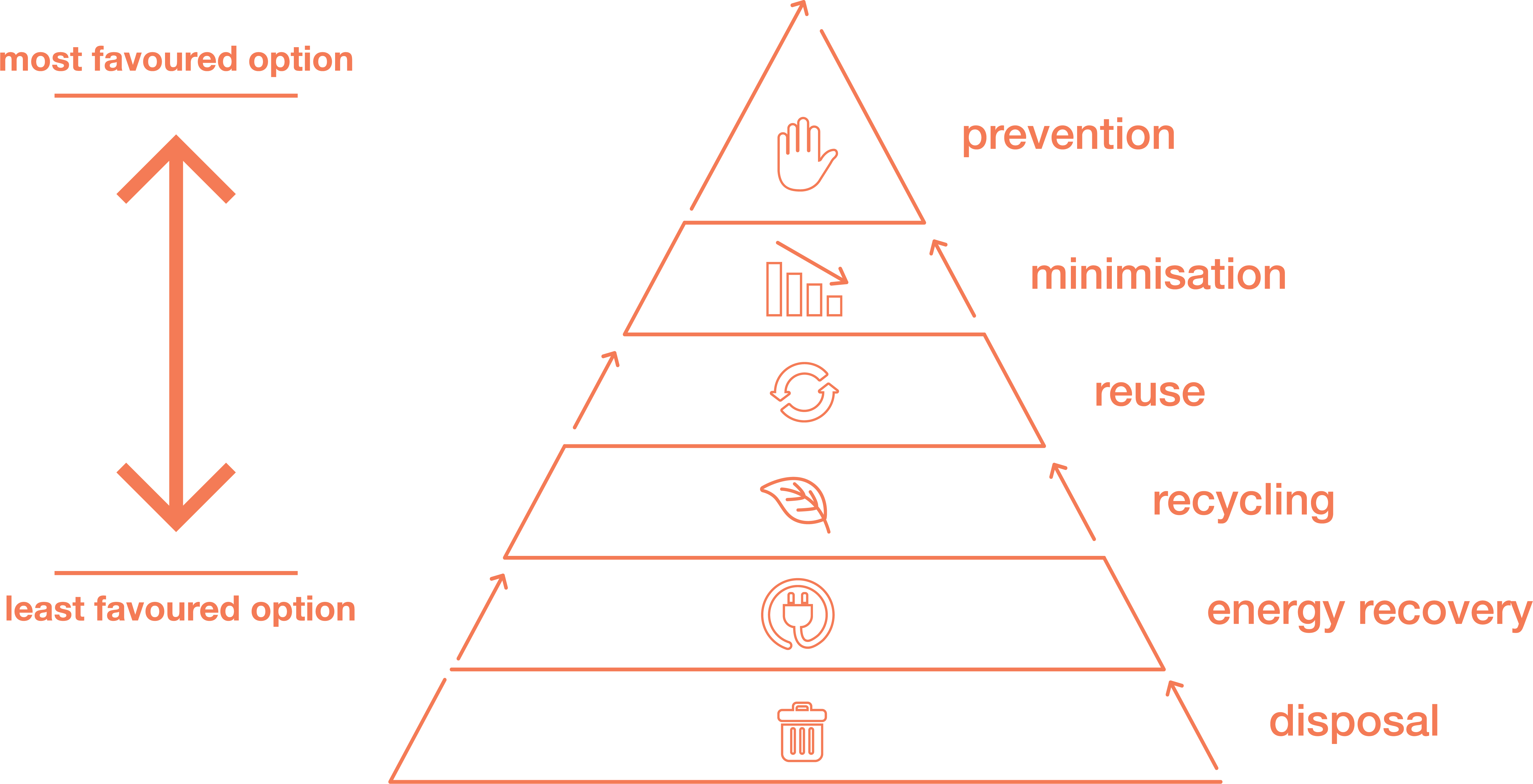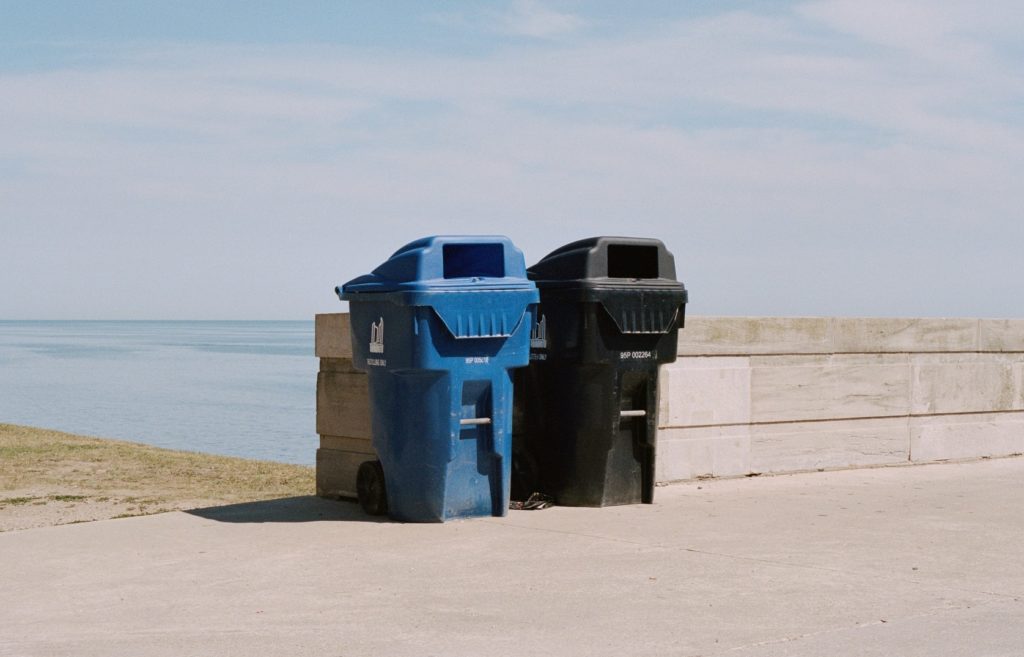
Source: zerowastehome
For many people, zero waste is often seen as a grassroots initiative, with communities and individuals taking personal responsibility for waste reduction on varying scales. This is perhaps best illustrated in the surge in popularity of the zero-waste lifestyle movement, most notably with programs like the mason jar challenge or consumer-led initiatives designed to cut out our reliance on single-use plastics.
In recent years there has been increasing emphasis placed on impactful zero-waste legislation and laws in states and cities across the US, with local governments beginning to take stewardship of waste management in a growing number of municipalities. From food scraps to electronic waste, end-of-life thinking is beginning to change the way we view trash, leading to governments stepping up to build a solid foundation for improved waste disposal and recycling.
Green government policies are nothing new, with clean-water legislation stretching back all the way to the late 1800s. It was in the 1960s, however, that environmentalism in the US really took off, with numerous policies put in place in the decades that followed, along with the founding of the Environmental Protection Agency (EPA) in 1970.
Now, we are seeing the latest chapter in green policy begin to gather steam, with zero-waste legislation and mandatory recycling programs addressing the more than 146 million tons of waste sent to landfill each year. These zero-waste policies go well beyond the scope of previous laws, with many set up to directly address climate change by reducing the amount of trash we send to landfill or incineration.
But what does zero-waste legislation entail, and what does zero-waste policy look like? Here, we look at how different zero-waste legislation is being developed across the US, as well as zero-waste initiatives that have engaged stakeholders in cities and states across the US.
What is Zero Waste Legislation?

On a fundamental level, zero waste aims to send no waste to landfills and incinerators, or bi-products dumped in waterways, as well as conserving resources through more sustainable production and consumption. Zero-waste legislation is a key part of the movement and complements the community-, non-profit-, and business-driven initiatives that have been forging the path to a more sustainable future.
In general, it takes a holistic approach to reduce all types of waste, and zero-waste goals of various municipalities may focus on specific materials or areas of waste generation.
Zero plastic waste policy
Plastic pollution, driven largely by single-use packaging such as plastic bottles and shopping bags, is probably the most visible waste stream we currently deal with, and therefore, is the focus of many zero-waste laws around the country.
Zero-waste policies to tackle plastic waste have been increasing, with ten governments introducing statewide bans on single-use plastic bags according to the National Conference on State Legislatures.
 These states are:
These states are:
- California
- Connecticut
- Delaware
- Hawaii
- Maine
- New Jersey
- New York
- Oregon
- Vermont
- Washington
The increasing speed at which these zero-waste policies are being introduced is evidenced by the fact that six of the eight states that have passed plastic bag legislation did so in 2019. What’s more, one of these, Vermont, also legislated against single-use straws and polystyrene containers, showing a broadening of policies as more states adopt them.
Zero waste food policy
Another area that has garnered a lot of attention in recent years is food waste, and the legislation needed to tackle it on a local, state, and national level. Food waste is one of the biggest hurdles to zero waste that many individuals, businesses, and legislators face.
Food waste makes up 22 percent of all municipal solid waste (MSW), making it the single largest component of US landfills. The United States leads the world in food waste, with around 40 million tons of food discarded every year — that’s roughly 161 billion dollars and 30-40 percent of the US food supply annually.
Food is wasted at each point in the supply chain leading legislators to introduce policies designed to increase waste recycling and improve composting at each stage of the journey.
Food Waste Production Across America

These food waste policies come in various forms, starting with protective legislation such as the federal Emerson Good Samaritan Act, which protects against criminal and civil liability arising from the age, packaging, or condition of donated food. There are additional state-level protections in many places, such as Massachusetts protecting the donation of food past its expiration date. All these policies, while not explicitly zero waste, protect those trying to reduce food waste.

Some states have also introduced tax incentives, such as Arizona, which offers a deduction to those donating food. Additionally, there are some states with direct funding to tackle food waste, such as Minnesota. Their Farm-to-Food Shelf program received a $1.1 million appropriation from the Legislature in 2017.
Another zero-food waste policy that is gaining traction is the introduction of organic waste bins and an outright ban on organic waste and food scraps going to landfill. California, Connecticut, Massachusetts, New York, Rhode Island, and Vermont have all passed laws to this effect aimed at food waste generators, such as grocery stores and restaurants.
One of the major drivers of food waste in households and businesses is confusion over labeling such as “sell by,” “use by,” etc. To try to tackle this, California enacted zero-waste legislation that requires the state department of food and agriculture to promote the terms “best by” and “use by” for clarity—something we may see more of as zero-waste policies become more ubiquitous.
How to implement zero-waste policy
In addition to individual pieces of zero-waste legislation, which are often multifaceted rather than explicitly “zero waste”, there has also been a push towards establishing zero-waste policy goals in states and cities across the US. Some cities that are driving this movement are:
Los Angeles, California

LA defines zero waste as “maximizing diversion from landfills and reducing waste at the source, with the ultimate goal of striving for more-sustainable solid waste management practices.” The state is focusing on three core areas:
- Product creation
- Product use
- Product disposal
Los Angeles’s zero-waste policy aims to send no waste to landfill by 2025, and through the introduction of extended producer responsibility laws for a variety of products, the state is taking a holistic approach to waste minimization for the entire life cycle of consumer goods.
San Francisco, California
Similarly, the San Francisco zero-waste policy is looking to divert all waste away from landfills and incinerators by following the waste reduction hierarchy closely:
prevent waste > reduce and reuse > recycle and compost

San Francisco was a very early adopter of zero-waste policies and legislation, aiming for 100% diversion by 2020, which they did not meet. They are still pushing in the right direction with forward-looking zero waste policies, but this lofty goal and failed expectations are a key issue for zero-waste policy initiatives.
Austin, Texas

Austin’s zero-waste policies are looking to divert 90% of waste from landfills and incinerators by 2040. Over a decade ago, the city approved a Zero Waste Strategic Plan, which put forth three benchmarks:
- Reducing by 20 percent the per capita solid waste disposed to landfills by 2012
- Diverting 75 percent of solid waste from landfills and incinerators by 2020
- Diverting 90 percent of solid waste from landfills and incinerators by 2040
This ambitious plan included numerous responsible waste management firms, businesses, and individuals as well as a host of zero-waste laws to curtail waste and incentivize a more circular economy. These included:
- Universal Recycling and Composting Ordinance
- Single-Use Products and Packaging Ordinances
- Construction and Demolition Recycling Ordinance
- Takeback Ordinance
State of Connecticut

Like other states and many cities, Connecticut brought about zero-waste policies with a whole system approach. They have a heavy focus on recognizing waste as a resource rather than a problem—a resource that offers social and economic opportunities such as jobs and new products.
Connecticut outlines how zero-waste policy goals are key, and on their official state website explain their zero-waste approach:
- Redesign the current, one-way industrial system into a circular system modeled on nature’s successful strategies – creating products and packaging that are durable, can be reused or easily recycled
- Provide waste-based business opportunities to create jobs from discards
- Recognize the importance of producer responsibility
- Aim to eliminate rather than manage waste
- Work to end taxpayer subsidies for use of virgin materials enabling reused and recycled products to compete
Zero-waste policy challenges
Despite zero waste policies tackling some of the biggest social, economic and environmental issues that face us today, there remain a variety of challenges to overcome.
First, there are groups that are trying to actively counter zero-waste laws and policies. These are often those with an interest in keeping things the way they are, such as plastic industry lobby groups who would see business disrupted by zero-waste laws. As mentioned earlier, this is a particular point of contention with plastic, and 10 states currently operate preemptive laws that stop the passing of single-use plastic bans. A further seven states have some sort of restriction on introducing zero-plastic waste policies.
Second, there are sometimes overambitious policy goals. San Francisco is a great example of overreaching and thus undermining waste management efforts. According to Politico, in 2002 the city’s Board of Supervisors decided on 100% waste diversion by 2020, a “one-up” on the state legislation that pushed cities for a 50% diversion rate. By not meeting their goal, it makes other zero-waste policy goals seem less achievable, and even the then president of the board, Tom Ammiano, admitted to Politico that their aim was “a little forward-thinking and a little bit of hubris.”
That said, despite the challenges, zero-waste legislation is still becoming more common across the US, with municipalities adopting increasingly forward-thinking policies that either target zero-waste goals directly or look to improve human health while delivering more robust environmental protections and the reduction in our reliance on natural resources.
For more information on zero waste and how you can start implementing it in your home or business, subscribe to zerowaste.com or follow the Zero Waste Blog. For tailored insight into how your business can achieve zero waste, talk with one of our TRUE Advisors.

